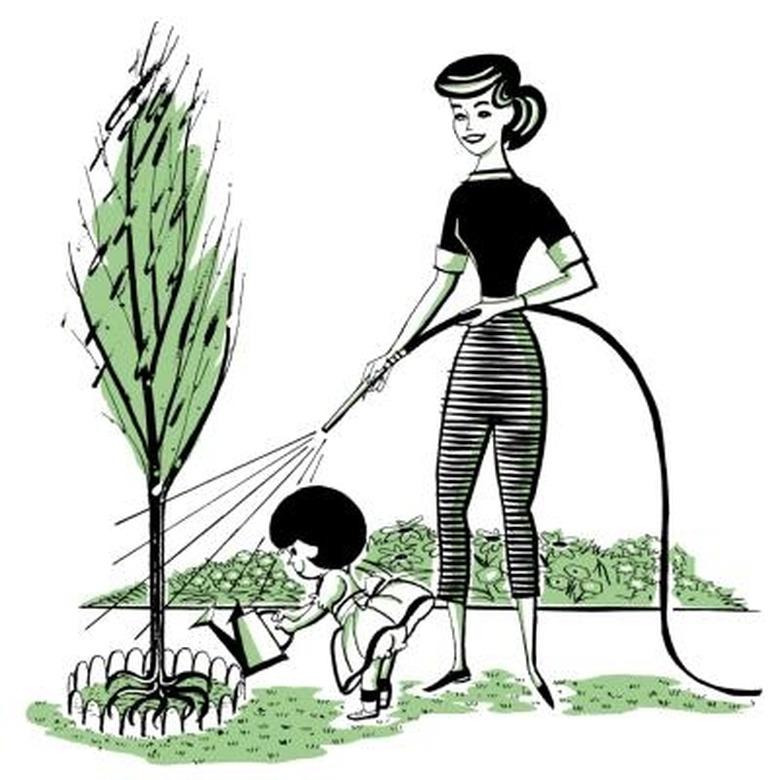How To Help A Tree That Is Overwatered
Though water consumption varies among different varieties of trees, a weekly soaking is usually sufficient. Heavy rainfall, improper landscape irrigation and excessive direct watering are known to saturate and damage roots. Over-watered trees display a variety of symptoms: their leaves may turn brittle, curl up, change colors or fall off prematurely; young trees may wilt; soil feels damp and fungi grows around the tree's base. If your tree shows any of these signs, a few strategies can reverse the damage.
Step 1
Feel the soil around the tree to verify that it's over-watered. Under-watered and over-watered trees display similar symptoms. Over-watered trees have wet soil.
Step 2
Shake a few tree branches to verify that the tree is still alive. A dead tree has brittle branches that break off easily, and no evidence of new growth. If the tree is already dead,you cannot revive it.
Step 3
Remove soil around the tree so there is no more than an inch of soil covering the tree's roots. When trees are planted too deeply, they can show signs of being over-watered. Clear weeds around the tree, and cover the soil with a 3- to 4- inch layer of mulch to promote water and air circulation in the roots, keeping the mulch at least 6 inches from the trunk.
Step 4
Relocate lawn sprinklers so they don't water your tree. Water from sprinklers shouldn't hit past the perimeter of the tree's canopy. Monitor lawn watering in general, and turn off sprinklers when the lawn feels damp.
Step 5
Water the tree sparingly, according to the directions for your particular species. Wait for the soil around the tree to dry completely between waterings. Avoid watering the base of the tree directly, which can cause root rot.
References
- North Dakota State University Extension Service: Questions on: Birch; Ron Smith
- North Dakota State University Extension Service: Questions on: Red Maples; Ron Smith
- University of Arizona Cooperative Extension: Watering Trees and Shrubs; September 2002
- Colorado State University Extension: Efficient Landscape Irrigation during Drought and with Limited Water Availability in Colorado; Laura Pottorff et al; May 2010
